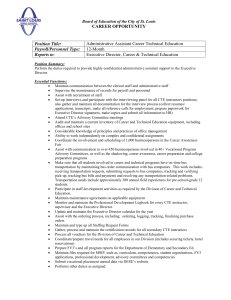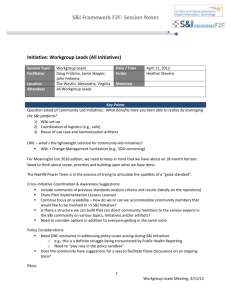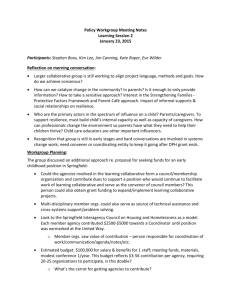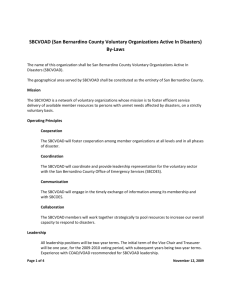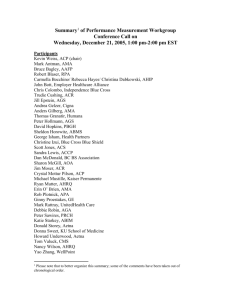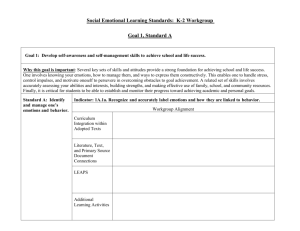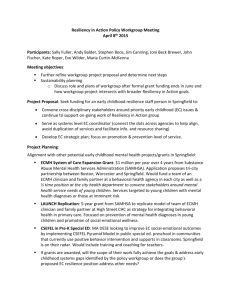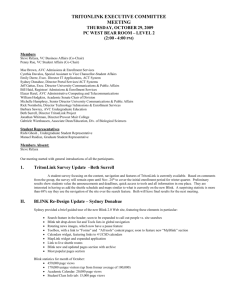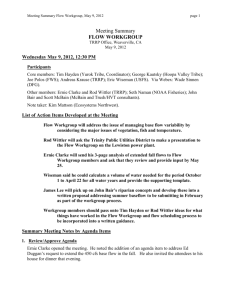Summary of the Workforce & Economic Vitality Council (WEVC)
advertisement
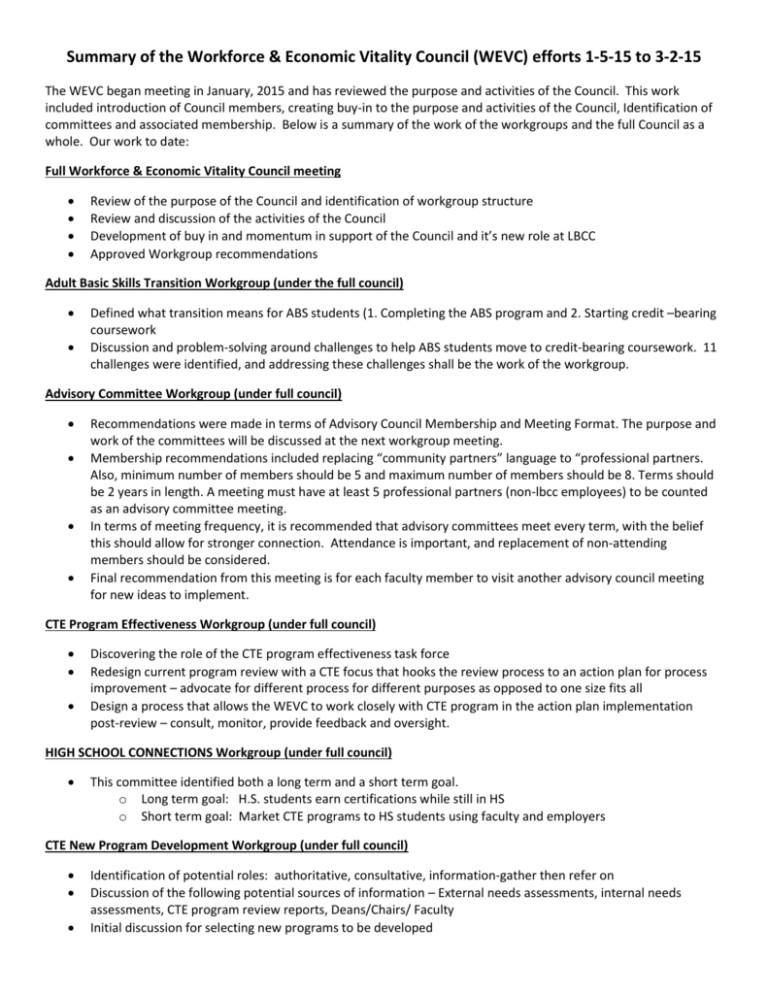
Summary of the Workforce & Economic Vitality Council (WEVC) efforts 1-5-15 to 3-2-15 The WEVC began meeting in January, 2015 and has reviewed the purpose and activities of the Council. This work included introduction of Council members, creating buy-in to the purpose and activities of the Council, Identification of committees and associated membership. Below is a summary of the work of the workgroups and the full Council as a whole. Our work to date: Full Workforce & Economic Vitality Council meeting Review of the purpose of the Council and identification of workgroup structure Review and discussion of the activities of the Council Development of buy in and momentum in support of the Council and it’s new role at LBCC Approved Workgroup recommendations Adult Basic Skills Transition Workgroup (under the full council) Defined what transition means for ABS students (1. Completing the ABS program and 2. Starting credit –bearing coursework Discussion and problem-solving around challenges to help ABS students move to credit-bearing coursework. 11 challenges were identified, and addressing these challenges shall be the work of the workgroup. Advisory Committee Workgroup (under full council) Recommendations were made in terms of Advisory Council Membership and Meeting Format. The purpose and work of the committees will be discussed at the next workgroup meeting. Membership recommendations included replacing “community partners” language to “professional partners. Also, minimum number of members should be 5 and maximum number of members should be 8. Terms should be 2 years in length. A meeting must have at least 5 professional partners (non-lbcc employees) to be counted as an advisory committee meeting. In terms of meeting frequency, it is recommended that advisory committees meet every term, with the belief this should allow for stronger connection. Attendance is important, and replacement of non-attending members should be considered. Final recommendation from this meeting is for each faculty member to visit another advisory council meeting for new ideas to implement. CTE Program Effectiveness Workgroup (under full council) Discovering the role of the CTE program effectiveness task force Redesign current program review with a CTE focus that hooks the review process to an action plan for process improvement – advocate for different process for different purposes as opposed to one size fits all Design a process that allows the WEVC to work closely with CTE program in the action plan implementation post-review – consult, monitor, provide feedback and oversight. HIGH SCHOOL CONNECTIONS Workgroup (under full council) This committee identified both a long term and a short term goal. o Long term goal: H.S. students earn certifications while still in HS o Short term goal: Market CTE programs to HS students using faculty and employers CTE New Program Development Workgroup (under full council) Identification of potential roles: authoritative, consultative, information-gather then refer on Discussion of the following potential sources of information – External needs assessments, internal needs assessments, CTE program review reports, Deans/Chairs/ Faculty Initial discussion for selecting new programs to be developed Job Placement Workgroup (under full council) We agreed that it is the responsibility of LBCC to assist with student job placement Brainstormed a number of ideas for placement, including development of an Exit DG class that helps students to get a job, job placement with advisory boards, marketing job placement services to both students and faculty CTE programs could have job placement embedded in their courses.

